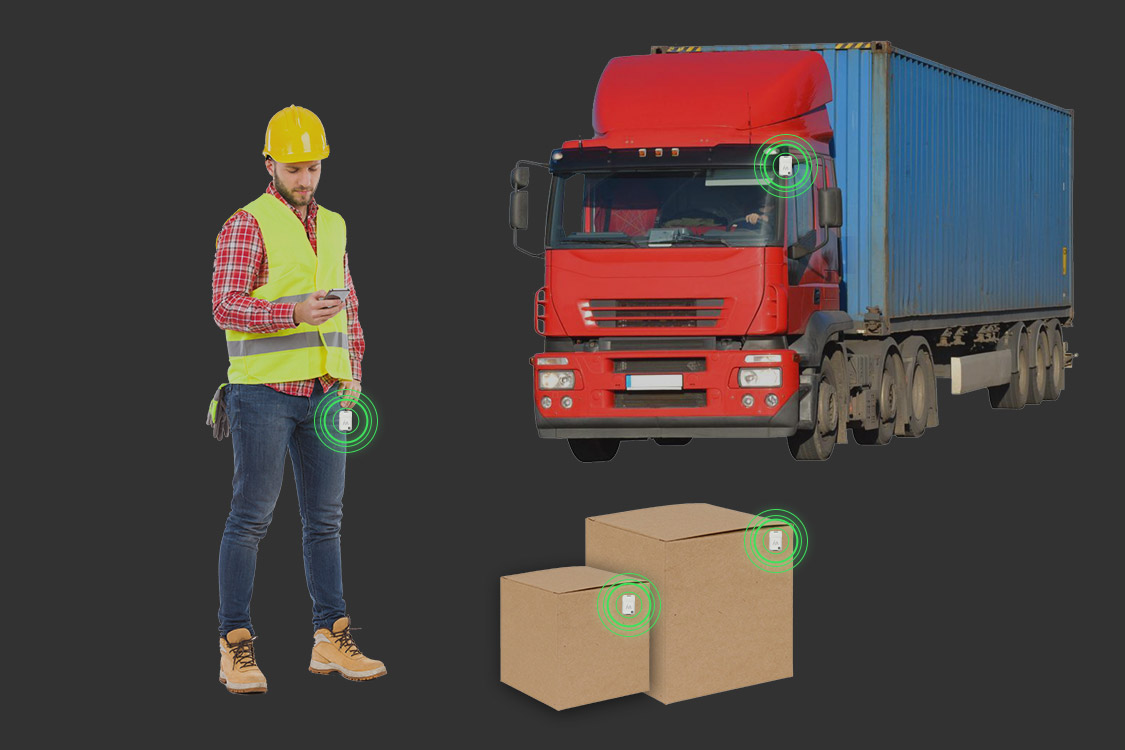Technology Trends

As industries develop, the race for innovative technologies to make operations more efficient and productive has grown rapidly. Organizations find it increasingly challenging to streamline their processes, particularly in workforce management and asset handling in product-based industries. The requirement for better solutions has led to the development of Real-Time Locating Systems (RTLS). What is RTLS technology? At a high level, it’s an advanced system designed to digitally track and manage assets and people effectively in real time. Let’s dig into this technology a bit deeper, including its application and benefits.
How Does RTLS Work?
RTLS is a technology that identifies the precise location of people or objects in real time within a specified boundary. The following sections will explain fully how RTLS works: every RTLS system requires hardware and software to create a functional indoor positioning network. In the implementation of the system, tags are attached to required items, equipment or individuals. These tags then communicate with a network of readers situated at strategic locations in the marked area, both indoors and outdoors, allowing for accurate asset tracking and monitoring.
This technology provides significant advantages to organizations that can enable them to make smarter decisions using accurate location data. Most importantly, RTLS can be implemented using various asset management and location systems rather than relying on a single solution. While some RTLS asset management applications require only simple timestamps to track when an object passes through a specific area, others demand more detailed, real-time location systems accuracy and visibility that can offer frequent updates to ensure precise tracking.


Components of RTLS
Most RTLS asset tracking and RTLS positioning solutions share core components composed of anchors, tags and location engines. So, depending on the use case, RTLS components are chosen depending on the accuracy, latency, range and throughput requirements of the business.
RTLS Anchors – These detect signals from transmitting tags to determine the real-time position of the tag. The anchor will then communicate each tag’s signal and timestamp the information which is then shared with the location engine. The location engine will then calculate the tag’s position.
RTLS Tags – Wireless devices that can be deployed fixed or dynamically to an object, room or person to help determine the location. Furthermore, tags send data to the anchors which then send data to the location engine. The location engine determines the location of the tag.
Location Engine – Processes receive location and IoT data from the hardware. From there, the location engine turns this information into actionable location data insights.
What Are the Benefits of RTLS?
The following are a few of the benefits of real-time location services:
Optimized Recordkeeping
RTLS management software keeps track of goods, people, vehicles and equipment within a specified location. Managers can better handle their business and make decisions accordingly if they’re aware of where all the assets are. Also, an asset tracking system helps warehouse managers analyze worker efficiency and productivity with trackable data to substantiate decision making.
Accurate Data
Maintaining an accurate inventory is essential, although it might be challenging. RTLS allows you to obtain and maintain a near-perfect inventory without the need for time-consuming and costly inventory audits. Furthermore, in just a few minutes, RTLS technology can tell you the exact location of all your assets in real time.
Improved Efficiency
With real-time data on where your on-site workers are, you can help them to keep improving their performance, which is good for both them and the company. This lets you make improvements to the overall efficiency of the company that you know will work. It also saves time because it tells companies where assets are and where you can find them in real time.
Better Security
Real-time location systems make it possible to show where workers and equipment are on a map of the work area in real time that can be monitored from a user-friendly dashboard. Consequently, when an asset tag leaves a specified area or if someone is tampering with it, management can be alerted. Many companies use RTLS to keep their workers safe because it can track where employees are. The system sends the location of an employee through a tag on their ID badge.
Common Applications of RTLS
There are several applications of RTLS in different industries, especially when combined with advanced IoT solutions for tracking:
1. Healthcare Tracking
- Increased efficiency – RTLS healthcare can help hospitals reduce administrative time, improve response time and increase quality of care by locating items efficiently.
- Tracking assets – The system tracks critical and expensive items like wheelchairs, IV pumps and machinery etc. in a hospital environment.
- Contact tracing – In community emergencies such as a pandemic, contact tracing is an essential factor and RTLS can help with such situations easily.
2. On-Site Fleet Tracking
- Monitoring vehicles – For fleet-based industries, businesses can monitor where the vehicles are on site and when they enter and exit the property.
- Parking management – When you have large groups of vehicles, you also need to keep track of their parking spaces.
- Forklift management – Tracking your forklifts allows you to understand where they are and if there is a need for more.
3. Asset Tracking
- Tracking of raw materials – RTLS solutions can be combined with asset tracking to keep track of key resources, such as supplies, machinery and position data to ensure that they arrive at the proper moment.
- Staff security – An RTLS can monitor personnel to reveal the precise location of your staff and indicate harmful locations while they are working.
What Technology Is Used for RTLS?
Many different kinds of technologies can track where something is. Each of these systems gives businesses a different set of benefits. Some technologies are better for keeping an eye on assets and people as they come in and out of a building. Whereas, other systems, like Ultra-Wideband or UWB RTLS, give accurate, real-time updates on the movement of assets within a building.
1. RFID or Radio Frequency Identification
It is a popular way for stores and facilities to track the movement of goods or tools within a short range. RFID’s most important features are low-cost technology; passive ID tracking; inventory management; and keeping an eye on employees.
2. Bluetooth Low-Energy (BLE)
Bluetooth low-energy beacons (BLE) are getting more accurate by the day which makes them better for real-time tracking. This is also a flexible technology for use to keep track of things as they pass through gates or move around inside a designated area.
3. Infrared (IR)
An RTLS can also use IR signals for different things than RFID because the receivers need to be able to see them. This is a low-cost information-gathering technique and you can track the location of an asset with IR Real-Time Location Systems.
4. GPS
The Global Positioning System (GPS) keeps track of where vehicles and equipment are in open mines and other businesses that work outside. Since this technology uses satellites, it can only track people in real-time within a few metres and outside of buildings.
5. Wi-Fi
Wi-Fi sends wireless signals in all directions to multiple access points. This is a cheaper way for businesses to start tracking in real time. It can track the time of arrival, the speed and the location within smaller distances.
Conclusion
To sum up, what is RTLS technology? It’s a tracking tech that – when combined with a powerful tracking solution – is beneficial to every industry and uses cases to keep everything organized and safe. To determine the right RTLS for your business you must consider three important things. The amount of square footage you need to track, what you want to track and how accurate you need your system to be. The answer to these questions will determine what underlying RF technology you need and which company suits your requirements.
If you are looking for an innovative and enterprise-grade RTLS solution, Mapsted’s IoT Division provides IoT RTLS solutions to business leaders across the globe with industry-leading accuracy for seamless asset tracking, personnel monitoring and anonymous heat mapping. If you enjoyed learning more about RTLS, you will want to watch our short video to Discover Mapsted’s New IoT Division and Transform Your Operations Today and check out our blog on How Asset Tagging Systems Streamline Business Operations.
Frequently Asked Questions
Q1. What is the difference between RFID and RTLS?
Ans. RFID determines whether a tagged item has passed from the designated area while RTLS does not need any intervention.
Q2. Where are location uses for RTLS?
Ans. Real-Time Location Systems can be used indoors or in confined areas and do not allow global tracking.
Q3. What is RTS healthcare?
Ans. It helps the healthcare industry by tracking their assets and workforce allowing hospitals to save a lot of time and money.
Q4. What is an RTLS sensor?
Ans. real-time location systems or location sensors are used to monitor an item and its physical location.
Q5. How Accurate are Real-Time Location Systems?
Ans. The accuracy of Real-Time Location Systems depends on the underlying RF technology used as well as the positioning techniques. UWB, for example, delivers one to two-meter accuracy while WiFi and BLE Bluetooth are less accurate with results between one to 10 meters. Different techniques for positioning however have allowed for more accurate results by implementing ToF (Time of Flight) and AoA (Angle of Arrival).
Q6. What is the Range of a Real-Time Location System?
Ans. The range of a Real-Time Location System depends on the RF technology and the use case and deployment environment. If a user requires a large space to be tracked the accuracy may decrease while for a smaller space, accuracy will increase. An example would be a miner in a vast cave versus order picking in a warehouse.
Q7. What technology does RTLS use?
Ans. It uses technologies such as RFID, Wi-Fi, BLE, and GPS.
